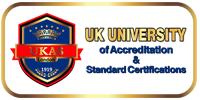Rebound Hammer Testing
STUDENT RESULTS RVSGLOBE
Click HereREBOUND HAMMER TESTING
A Rebound Hammer test is used to perform the comprehensive strength of concrete by using a rebound hammer tester. The rebound hammer test is also called the “Schmidt hammer test.”
What is Rebound Hammer Test?
The Rebound hammer test is a non-destructive test method of the concrete used to strengthen the comprehensive concrete. This test is performed on hard concrete areas. The working process of this test contains spring-controlled mass with a slider on the plunger and tubular housing.
Uses of Rebound Hammer Test:
This test is used to determine the surface hardness measurement of the concrete regarding soundness and quality. The low measurement numbers give weak concrete surface details which might be affected by corrosion and the high rebound number proves the high concrete quality.
Objectives of Rebound Hammer Test:
Rebound Hammer Test Process:
A Rebound hammer is a tool designed to test the concrete hardness in various factors. The process of rebound hammer test is as follows:
The Procedure of Rebound Hammer Test:
The rebound hammer test is conducted horizontally either vertically upward or downward on concrete surfaces. The test is performed only on dry concrete surfaces. Test on rough surface results in incomplete compaction, grout loss, tooled surfaces cannot obtain reliable results and hence for appropriate results always choose the dry, smooth, and clean surface.
The Calculation process of Rebound Hammer Tester:
Though, the rebound hammer test specifies the concrete strength, the higher the average number defines the strength of the concrete. The Rebound hammer test is usually conducted on all the observation points on all the accessible structural elements.



